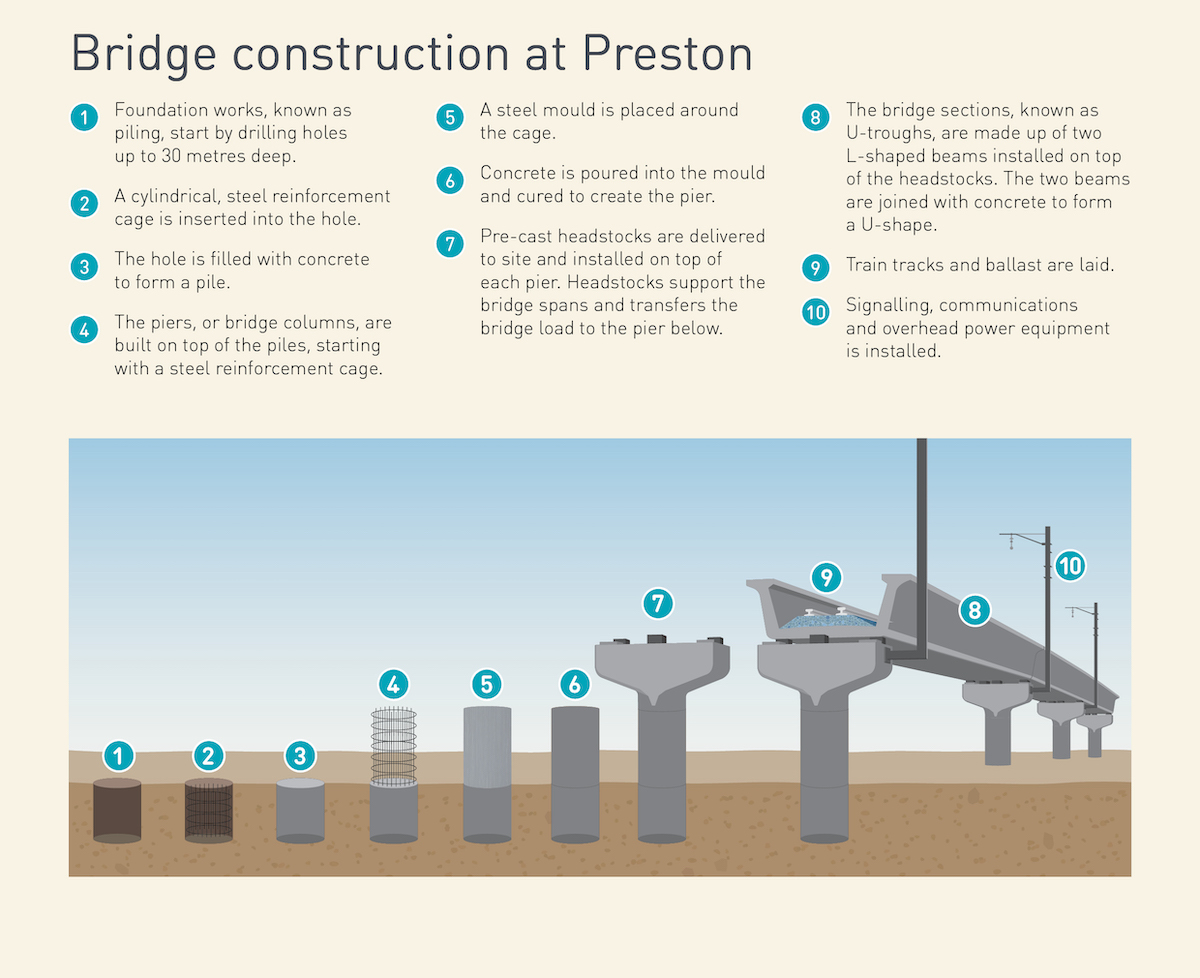27 July 2021
The Victorian Government is removing the level crossings at Oakover Road, Bell Street, Cramer Street and Murray Road in Preston, and building new Bell and Preston stations.
Around 82,000 vehicles pass through these level crossings on the Mernda line each day, with the boom gates down for up to 40% of the morning peak.
These level crossings will be removed by raising the rail line over the roads by the end of 2022. The new open space being delivered under the 2km rail bridge will be ready for locals to enjoy in 2023.
Following the success of the Reservoir Level Crossing Removal Project, we will use the same innovative ‘monopiling’ technique to build the new rail bridges. To build a rail bridge, specialised machinery is needed. As with any major construction this can result in noise and vibration.
Read on for more information on how we’ll build the new elevated rail and what to expect.
Did you know?
The Mernda line has unique constraints as it cannot close for longer than 12 consecutive days due to a requirement for trains to regularly access the Epping maintenance yard. The team will build most of the city-bound rail bridge with little disruption to train services.
Monopiling
Monopiling is ideal for Preston’s soil and rock material and low groundwater table.
Traditional rail bridge foundations consist of a cluster of small diameter piles below ground, topped with a larger concrete ‘pile cap’ to support each bridge column. Monopiling is a single pile, and no pile cap – which lessens time and labour.
There are 3 different piles to be installed for the foundations of the 2 rail bridges at Preston.
- 100 monopiles at 2.1 metres in diameter
- 28 piles at 1.05 metres in diameter
- 14 piles at 1.2 metres in diameter
When piling ends, the rest of the bridge and elevated station structure will take shape above ground for everyone to see.
Piers
Bridge piers are the upright support for a structure. At Preston you will see 114 piers installed to support the structure of the 2 rail bridges and the new Bell and Preston stations.
U-troughs
The bridge sections, known as U-troughs, are made up of 2 L-shaped beams installed on top of the headstocks. The 2 beams are joined with concrete to form a U-shape. At Preston 232 L-shaped beams will be joined to form 116 U-troughs – this will become the base where we lay the train tracks and ballast. The graphic opposite shows you what you’ll see as construction on the new rail bridges and 2 stations continues in Preston.
What to expect
Safety is our number one priority, therefore during the construction of the rail bridges and new stations, at times we’ll need to close the Mernda line. During this time, buses will replace trains. The closures will be no longer than 12 consecutive days.
In 2022, we will close Bell and Preston stations for a period of time to create a safe environment for the project workforce and community while we complete the rail bridge and build sections of the new modern stations. During this time, to keep the Mernda line open, trains will operate on one single track between Thornbury and stations. We’ll be out to the community with more information closer to the date.
More Information
While construction is underway, there will be changes to the way you travel.
Register for SMS updates by texting PRESTON on 0428 581 917.
Bridge construction at Preston
- Foundation works, known as piling, start by drilling holes up to 30m deep.
- A cylindrical, steel reinforcement cage is inserted into the hole.
- The hole is filled with concrete to form a pile.
- The piers, or bridge columns, are built on top of the piles, starting with a steel reinforcement cage.
- A steel mould is placed around the cage.
- Concrete is poured into the mould and cured to create the pier.
- Pre-cast headstocks are delivered to site and installed on top of each pier. Headstocks support the bridge spans and transfers the bridge load to the pier below.
- The bridge sections, known as U-troughs, are made up of 2 L-shaped beams installed on top of the headstocks. The 2 beams are joined with concrete to forma U-shape.
- Train tracks and ballast are laid.
- Signalling, communications and overhead power equipment is installed.
